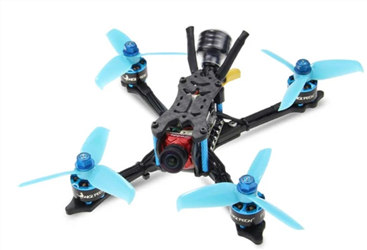
Why use LiPo batteries in quads
Lipo batteries are now very common batteries, and the most common power of quads is lipo batteries, but why did we choose lipo batteries instead of others?
*LiPo batteries are lightweight and can be made into almost any shape and size. The lightweight battery can meet your requirements for higher mAh and higher current.
For example, a 2200mAh 4s battery (14.4v) LiPo, which weighs lighter than the 1800mAh 7.2v NiCd battery pack, almost half of 1800mAh, is roughly the same area as a single 1800mAh 7.2 NiCad battery.
*LiPo batteries have a large capacity, which means that they maintain a large amount of energy in a small package (high energy density).
*LiPo has an excellent discharge rate and power-to-weight ratio. The biggest problem with multi-rotor batteries is that the motor consumes a lot of current,
LiPo is very good at maintaining a stable voltage/power output during discharge. However, when compared to NiCad (nickel-cadmium batteries), NiMh (nickel-metal hydride batteries) or PB (lead-acid batteries), the voltage/power drops very quickly (and is harmful) when they reach a fully discharged state. For example, there is a 250mm size racing four-wheel drive that can provide a constant inrush current of 48 amps or nearly 100A. This means that it requires a battery with a large discharge rate.
For example, in a 10-minute game, there are 1800mAh 4S LiPo running, and the discharge (C) rating is 100C. This gives me a possible continuous current of 180A, which is enough, and can reduce the voltage to a great extent under high load.
*LiPo battery has a high discharge rate and can provide power for the most demanding electric remote control aircraft and vehicles. LiPo also allows a fairly high charging rate, so it can be charged in an hour or less.
*Different from NiCad (nickel-cadmium battery) or NiMh (nickel-metal hydride battery); LiPo has no "memory effect".
In short, Li-Po batteries provide high energy storage density to weight ratio. They also provide us with a stable voltage output, which can safely and quickly discharge, have a fast charging time, and can be configured for a variety of voltages, capacities, shapes, and sizes.
This is why LiPo batteries are used in drones.

But using lipo also has many problems, such as LiPo's sag, that is because they are relatively fragile. If you want to get enough charge/discharge cycles from LiPo, you should only reduce their charge to 20% of the capacity, and don’t let them charge for a long time, store them with 50% charge, and do many other things.
They are also very flammable, so you need to be very careful when charging them, but be careful, if the pouch is punctured during a collision, it is likely to release a lot of hydrogen fluoride, and then catch fire (you absolutely do not want to be in a building Within this).
This can also happen if you over-discharge, or try to absorb a lot of current and the package swells and pops up suddenly.


Leave a comment